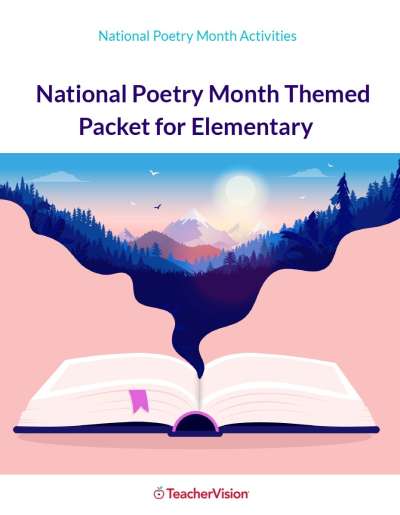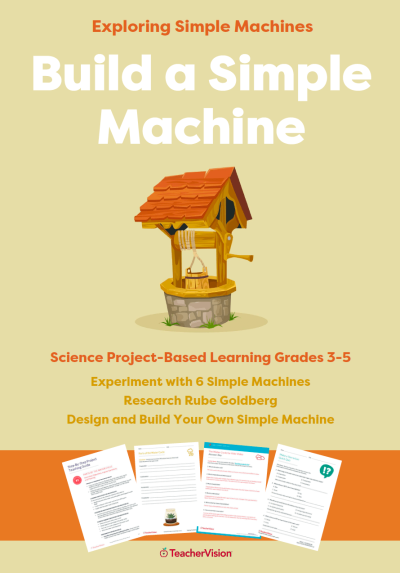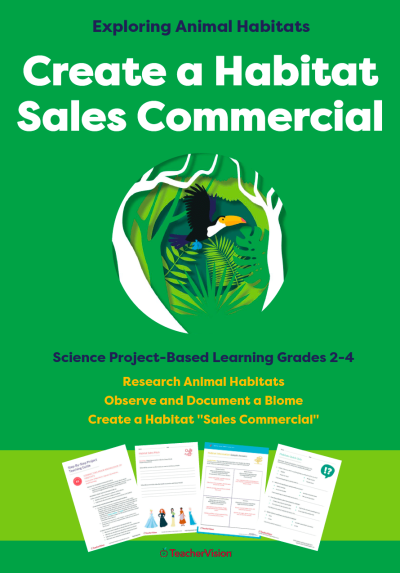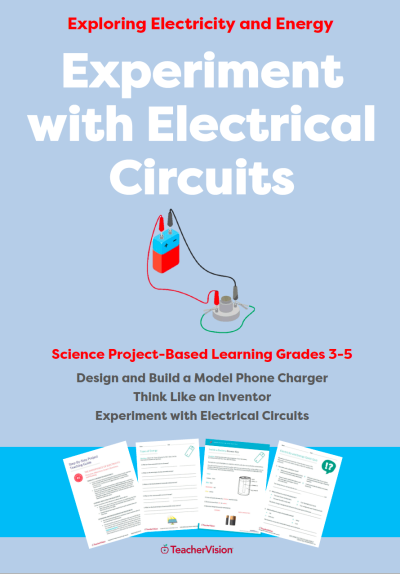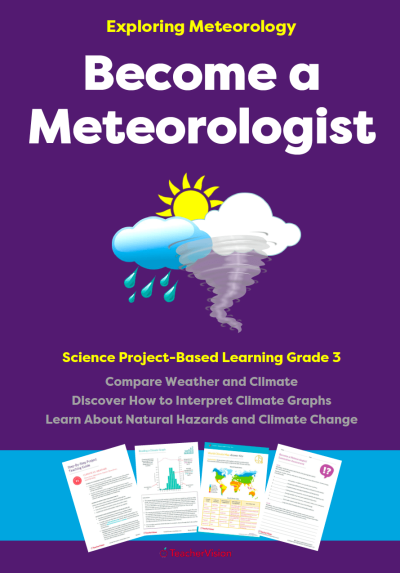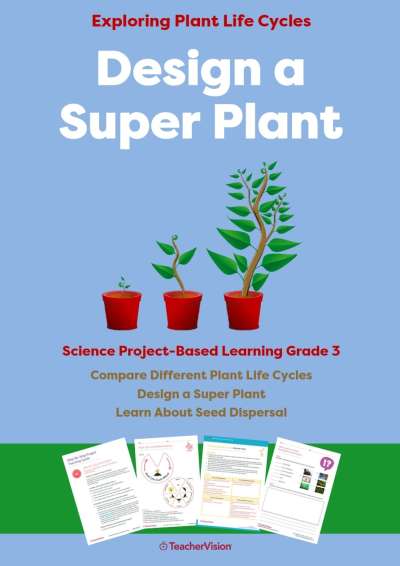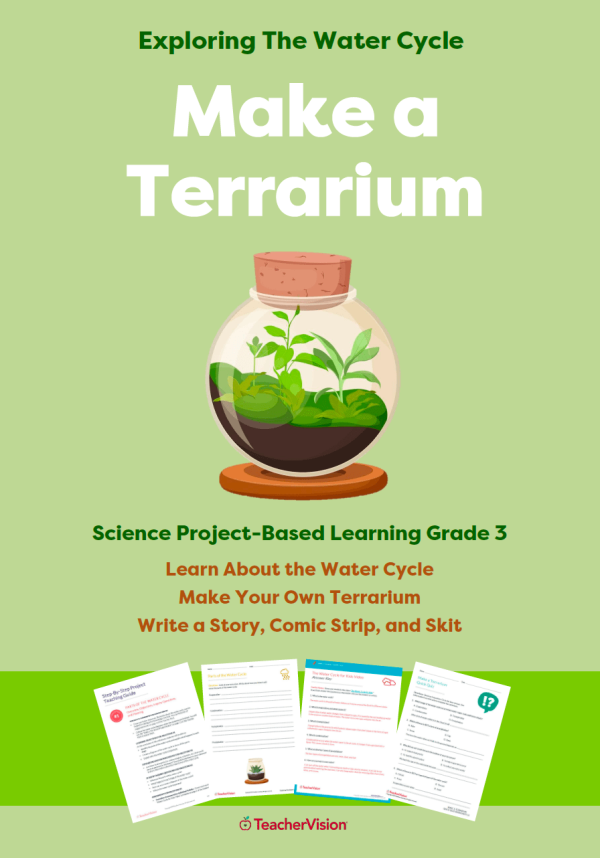
Included with a Premium Membership
Subscribe for instant access to this and every resource on TeacherVision.
A Water Cycle Project Complete with Lesson Plan, Activities and Printables for Grade 3
Learn all about the water cycle, build a terrarium, and demonstrate the stages of the water cycle to the class!
This project-based learning unit is designed to teach and reinforce the concepts in a Grade 3 Science unit on the water cycle and can be used in conjunction with existing curriculum materials and concepts such as Ecosystems. Students will explore the different stages of the water cycle - evaporation, transpiration, condensation, and precipitation - before creating terrariums to demonstrate how the water cycle really works. In the later milestones, students get to apply their knowledge by presenting skits of what they learned to the class.
How is the Water Cycle Project Structured?
The project is divided into 5 Milestones; each Milestone includes a self-contained student project activity. Done in sequence, the Milestones connect to enable students to produce a comprehensive capstone activity. The minimum suggested duration for completing this project is 5 class periods. However, it is completely flexible and can be lengthened or shortened as necessary, based on available class time and interest level.
What's Inside
This unit is packed with hand-on science experiments and creative student activities designed to help students learn about the different stages of the water cycle in a fun, memorable, and meaningful way. This 44-page project-based unit comes complete with:
- For the Teacher: A complete Lesson Plan with step-by-step instructions for all activities, teaching tips, assessment guidance, and inquiry questions.
- For Students: A full-color Student Pack complete with all of the printables and instructions students need for the research and activities - just print (or share) and teach!
A complete, ready-to-teach Teacher Pack that includes:
- Teacher versions of all the student printables with step-by-step instructions;
- Formative and summative assessments, answer keys, and a full project rubric;
- Instructions and guidance for the extension activities and project enhancements;
- Materials and resources lists, links to articles and additional resources for lecture and presentation.
What's Included
Lesson Plan - Step-by-Step Project Teaching Guide
- Milestone #1 - Parts of the Water Cycle
- Milestone #2 - Making a Terrarium
- Milestone #3 - Water Cycle Story
- Milestone #4 - Planning a Skit
- Milestone #5 - Presenting Water Cycle Skits
Teacher Resources
- Materials List - Materials Needed for the Projects in This Unit
- Books About The Water Cycle
- The Water Cycle for Kids Video Answer Key
- Make a Terrarium Quick Quiz
- Make a Terrarium Quick Quiz Answer Key
- Oral Presentation Mini-Lesson
- Make a Terrarium - Water Cycle Project Summative Assessment
- Make a Terrarium - Water Cycle Project Summative Assessment Answer Key
- Make a Terrarium - Water Cycle Project Rubric
Student Resources
- The Water Cycle for Kids Video
- Water Cycle Diagram Guidelines
- Milestone #1 Inquiry Question
- Making a Terrarium
- Parts of the Water Cycle
- Milestone #2 Inquiry Question
- Water Cycle Story Planning
- Water Cycle Story
- Water Cycle Comic
- Milestone #3 Inquiry Question
- Raindrop Patterns
- Milestone #4 Inquiry Question
- Water Cycle Skit Observations
- Milestone #5 Inquiry Question
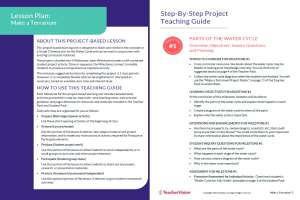
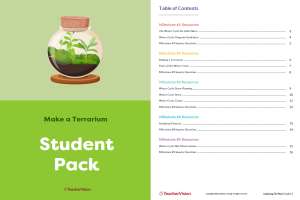
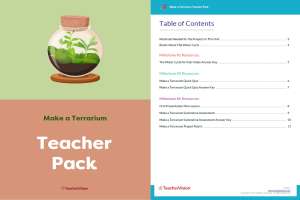
OVERVIEW:
This project-based learning lesson is designed to support and reinforce the concepts in a Grade 3 science unit on The Water Cycle. It is built around 5 inquiry-based milestones that incorporate cross-curricular hands-on projects, formative and summative assessments, independent and group activities, and extensions.
STUDENT/GROUP OUTPUT:
In the course of this project-based learning unit, students will:
Build background knowledge about the water cycle
Make a terrarium
Create a story, comic strip, and skit
SUGGESTED SUBJECT PREREQUISITES:
Students will acquire the necessary background knowledge of the water cycle as part of this project, and instructional materials for providing that background are included in the Teacher Pack.
SEQUENCE AND PACING:
This project-based unit is divided into 5 milestones. The minimum suggested duration for completing this project-based unit is 5 class periods. However, the unit is completely flexible and can be lengthened or shortened as necessary or desired, based on available class time and interest level.
TECHNOLOGY RESOURCES (suggested):
Internet access

